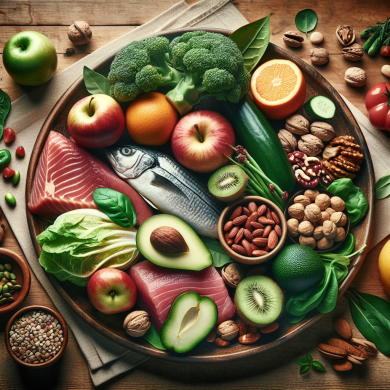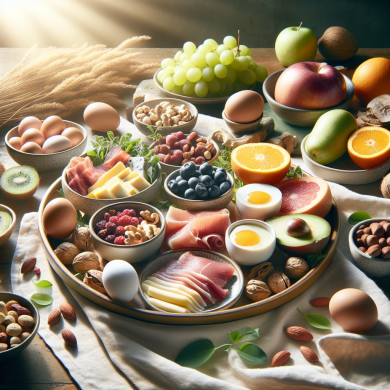Kickstart Your Paleo Journey: Simple Steps
Introduction to the Paleo Diet
The Paleo Diet, often referred to as the “Caveman Diet,” is a nutritional approach that aims to emulate the eating habits of our Paleolithic ancestors. This diet focuses on whole, unprocessed foods that would have been available to our hunter-gatherer predecessors, such as meats, fish, fruits, vegetables, nuts, and seeds. The central premise is that modern diets, rich in processed foods, grains, and sugars, contribute to various health issues, and by returning to a more primal way of eating, we can enhance our well-being.
Benefits of the Paleo Diet
Advocates of the Paleo Diet claim a wide range of health benefits, including improved digestion, increased energy levels, better weight management, and enhanced metabolic health. By eliminating processed foods, refined sugars, and grains, the diet potentially reduces inflammation, stabilizes blood sugar levels, and supports overall health. Additionally, the focus on nutrient-dense foods can provide essential vitamins and minerals, promoting optimal body function.
Simple Steps to Kickstart Your Paleo Journey
1. Educate Yourself
Understanding the principles of the Paleo Diet is crucial for successful implementation. Familiarize yourself with the types of foods that are encouraged and those that should be avoided. There are numerous resources available, including books, websites, and social media groups, dedicated to sharing Paleo recipes, tips, and success stories. Knowledge is power, and the more you know, the easier it will be to make informed dietary choices.
2. Start with a Pantry Overhaul
Begin your Paleo journey by clearing out your pantry and refrigerator of non-Paleo foods. This means eliminating processed foods, grains (such as wheat, rice, and corn), legumes (like beans and lentils), dairy products, and refined sugars. Replace these with Paleo-friendly alternatives such as fresh vegetables, fruits, lean meats, eggs, nuts, and seeds. Stocking your kitchen with the right ingredients will set you up for success.
3. Meal Planning and Preparation
Planning your meals in advance is a key strategy in maintaining a Paleo lifestyle. Spend some time each week to create a meal plan that includes breakfast, lunch, dinner, and snacks. This will not only save you time but also ensure you have the necessary ingredients on hand. Consider batch cooking or preparing meals in advance to make it easier to stick to the diet, especially on busy days.
4. Start Simple
Transitioning to a new way of eating can be overwhelming, so it’s best to start simple. Focus on incorporating more whole, unprocessed foods into your meals. A typical Paleo plate might include a portion of protein (such as chicken, beef, or fish), a generous serving of vegetables, and a healthy fat source (like avocados or olive oil). As you become more comfortable, you can experiment with more complex recipes.
5. Embrace Healthy Fats
Contrary to some popular belief, not all fats are bad for you. The Paleo Diet encourages the consumption of healthy fats, which are essential for various bodily functions and can keep you feeling satiated. Include sources of healthy fats in your meals, such as coconut oil, olive oil, avocados, and nuts. These fats are not only delicious but also beneficial for your overall health.
6. Stay Hydrated
Proper hydration is crucial for overall health and well-being. Make sure to drink plenty of water throughout the day. Herbal teas and black coffee can also be part of your Paleo diet, but be cautious with adding sweeteners or dairy. Staying hydrated will help you feel more energized and support your body’s natural detoxification processes.
7. Listen to Your Body
Everyone’s body is different, and what works for one person may not work for another. Pay attention to how your body responds to the changes in your diet. You might find that certain foods make you feel better or worse. Adjust your diet accordingly, and don’t hesitate to seek guidance from a healthcare professional or nutritionist if you have specific health concerns or dietary needs.
Overcoming Common Challenges
Social Situations
One of the most common challenges Paleo followers face is navigating social situations that involve food. Whether it’s dining out, attending parties, or traveling, sticking to the diet can be challenging. Prepare in advance by researching restaurant menus, bringing your own Paleo-friendly dishes to gatherings, or simply communicating your dietary preferences to friends and family. Most people will be understanding and accommodating.
Cravings and Temptations
Cravings for non-Paleo foods, especially in the early stages, are normal. Combat these by having Paleo snacks on hand, such as nuts, seeds, or fruit. Experiment with recipes to recreate your favorite non-Paleo dishes in a Paleo-friendly way. For example, try making cauliflower rice instead of regular rice or use almond flour in place of wheat flour for baking.
Plateaus and Setbacks
It’s not uncommon to experience plateaus or setbacks in any dietary journey. Don’t be discouraged if you hit a plateau in your weight loss or health improvements. Re-evaluate your diet, ensure you’re not inadvertently consuming non-Paleo foods, and consider incorporating more physical activity into your routine. Remember, progress takes time, and consistency is key.
Incorporating Exercise
While the Paleo Diet focuses primarily on nutrition, incorporating regular physical activity is an important component of a healthy lifestyle. Our ancestors were constantly on the move, and mimicking their active lifestyle can have significant health benefits. Choose activities you enjoy, whether it’s walking, running, strength training, or yoga, and aim to make movement a daily habit.
Conclusion
Embarking on a Paleo journey can be a rewarding experience, offering numerous health benefits and a deeper connection to the foods you eat. By educating yourself, planning meals, and listening to your body, you can successfully transition to a Paleo lifestyle. Remember that every journey is unique, so be patient and compassionate with yourself as you navigate this new way of eating. With dedication and perseverance, you can kickstart your Paleo journey and enjoy the benefits of a healthier, more natural diet.















Add comment